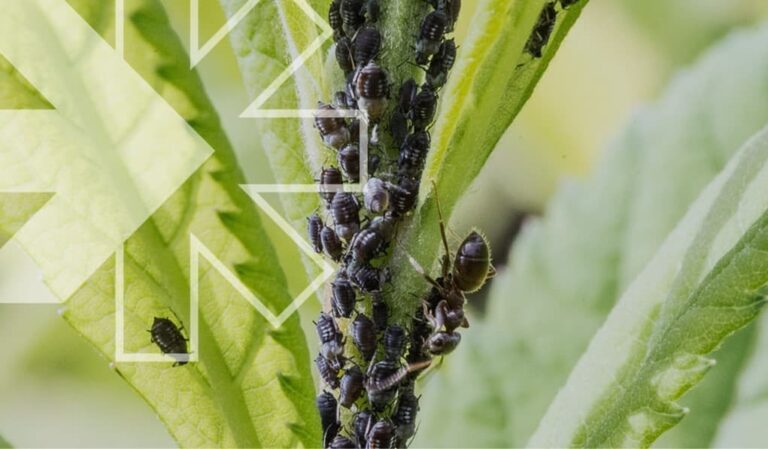Soil is more than just a growing medium. It is a dynamic, living ecosystem that influences plant health, crop yields, and environmental sustainability. However, years of intensive farming, excessive chemical use, and soil degradation have left much agricultural land depleted of essential nutrients and beneficial microbial life. To counter this, farmers worldwide are turning to biosolutions, a nature-based approach that enhances soil health without harming the environment.
Biosolutions strategies use biostimulants, adjuvants, biocontrol agents, and biofertilizers to restore soil fertility, strengthen plant resilience, reduce disease pressure, and optimize nutrient use. These interconnected strategies work together to create healthier, more productive soils, reducing dependence on synthetic inputs while improving overall farm sustainability.
Boosting plant and soil resilience with biostimulants
Healthy soils support plant growth. However, different types of environmental stress such as drought, nutrient depletion, and soil compaction can weaken crops. This is where biostimulants play a crucial role, helping plants to optimize growth and withstand adverse conditions.
Biostimulants are natural compounds that enhance plant metabolism, improve nutrient absorption, and strengthen root development. Humic and fulvic acids, for example, improve soil structure and increase the availability of essential nutrients, helping plants to absorb them more efficiently. Seaweed extracts stimulate root growth and enhance plant tolerance to extreme weather, while protein hydrolysates and L-α free amino acids activate plant metabolism and have a curative effect in situations of abiotic stress, leading to stronger development and better yields.
Yet biostimulants do not just work on plants. They also support microbial life in the soil. A biologically active soil fosters beneficial microorganisms that cycle nutrients and decompose organic matter, further strengthening soil health. However, biostimulants and microbes must be efficiently delivered to plants and soil for them to work effectively. This brings us to another crucial aspect of biosolutions: disease management through biocontrol agents.
Fighting soilborne diseases with biocontrol agents
One of the biggest challenges in agriculture is controlling soilborne diseases that weaken plants and reduce yields. Traditionally, chemical fungicides and pesticides were the go-to solution, but they can disrupt soil biodiversity and lead to resistant pathogens. Biocontrol agents offer a natural and sustainable alternative.
Beneficial microbes such as Trichoderma fungi and Bacillus bacteria colonize plant roots, forming a protective barrier against pathogens. Trichoderma species, for example, act as natural antagonists to fungal diseases such as Fusarium and Pythium, preventing them from infecting crops. Similarly, Bacillus subtilis produces antimicrobial compounds that suppress harmful bacteria, enhancing plant health without negatively affecting beneficial organisms.
Biocontrol strategies also extend to pest management. Entomopathogenic nematodes (EPNs), microscopic worms that target soil-dwelling pests such as grubs and weevils, offer a safe alternative to chemical insecticides. Unlike synthetic chemicals, EPNs selectively kill pests while maintaining ecological balance in the soil.
While biocontrol agents help protect plants, soil fertility must also be maintained to ensure crops receive the nutrients they need for optimal growth. This is where biofertilizers come into their own.
Restoring soil fertility with biofertilizers
For decades, conventional farming has relied on synthetic fertilizers to replenish soil nutrients. However, overuse has led to nutrient leaching, soil acidification, and water pollution, all of which threaten long-term soil fertility. Biofertilizers offer a sustainable solution by harnessing beneficial microorganisms to naturally restore nutrient levels.
Nitrogen-fixing bacteria, such as Rhizobium and Azospirillum, convert atmospheric nitrogen into a form that plants can use, reducing the need for synthetic nitrogen fertilizers. Meanwhile, phosphate-solubilizing microbes, such as Pseudomonas and Bacillus, help release bound phosphorus in the soil, making it more readily available to plants.
Another key player in soil health is mycorrhizal fungi, which form symbiotic relationships with plant roots. These fungi extend root networks, improving water and nutrient uptake, while also enhancing soil structure by promoting the formation of stable aggregates. This not only helps plants access nutrients more efficiently but also improves soil aeration and moisture retention, further supporting healthy crop growth.
However, these inputs must be applied effectively to maximize the benefits of biofertilizers, biostimulants, and biocontrol agents. This is where adjuvants play a critical role.
Enhancing the effectiveness of soil inputs with adjuvants
Many farmers focus on applying biostimulants, biocontrol agents, and biofertilizers but overlook the importance of ensuring their proper absorption and retention. Adjuvants solve this issue by improving the efficiency of these inputs, ensuring they reach their targets and remain effective for longer.
For example, surfactants help distribute microbial solutions evenly in the soil, preventing them from pooling in one area or being washed away by irrigation. Penetrants improve the movement of nutrients and beneficial microbes into plant roots, while stickers help biocontrol solutions adhere to plant surfaces, preventing them from being lost due to rain or wind.
Farmers can increase the effectiveness of their soil treatments by integrating adjuvants into their biosolutions program. This is particularly important when applying biocontrol agents, which must establish themselves in the soil and outcompete harmful pathogens.
Farmers can achieve a truly sustainable soil management system with all these biosolutions working together: biostimulants to enhance plant strength, biocontrol agents to protect against diseases, biofertilizers to replenish soil nutrients, and adjuvants to improve application efficiency.
Integrating biosolutions for a sustainable future
No single solution can address all soil health challenges. Sustainable soil management requires a holistic approach, combining biocontrol, biostimulants, adjuvants, and biofertilizers with regenerative farming practices.
Techniques such as crop rotation, composting, and minimal tillage complement biosolutions by preserving soil structure, improving organic matter content, and reducing erosion. When combined, these strategies create a resilient soil ecosystem that can support plant growth while minimizing environmental impact.
As the demand for sustainable food production grows, biosolutions in agriculture present a viable path forward. Farmers who adopt these natural approaches not only enhance soil health and increase yields but also reduce their environmental footprint. The future of farming can be both productive and sustainable with healthy, biologically active soils, thus ensuring food security for generations to come.















